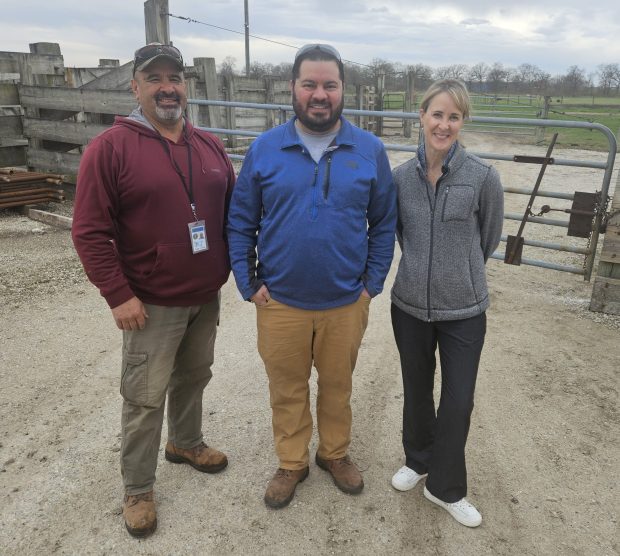Two baby bison were born on Monday to the herd at Fermilab in Batavia, officials with the lab said.
“One of the most exciting moments is when a calf takes its first steps,” Cleo Garcia, Fermilab’s herdsman, said in a press release about the baby bison. “Sometimes, within just a few minutes of being born, they’re already up and walking around. It’s incredible to see.”
Since 1969, bison have been a part of the landscape outside the particle physics and accelerator laboratory in Batavia.
The initial herd was established by the laboratory’s first director, Robert Wilson.
“Having bison, it’s very symbolic of the frontier and it dates back to our first director who grew up in the west and wanted to bring some of that natural element back here. It’s sort of a symbol of the frontier of science as well as the natural frontier that the campus offers for the public to watch,” Fermilab Media Relations Manager Tracy Marc said.
The herd now boasts 27 bison including the two new calves, two bulls and 23 females.
“This is an important ecology program and it’s self-sustaining,” Marc said. “It’s paid for at the end of the herding season in the fall as the bison are actually sold to farmers in the interest of outreach and education – to farmers who keep and raise them for the same purpose. The money we make feeds back into the program.”
Calves are deliberately not named as a number will eventually be sold at auction. About 20 bison are sold each year from the herd including some of the older calves as well as some females.
“They do a really good job of keeping diversity so we’re not just heavy in babies and moms,” Marc said.
Will Alvarez, roads and grounds manager at Fermilab, on Tuesday said that the birth of calves to the herd is always special.
“Every year, seeing the calves born brings a sign that spring is on the way and brings everyone at the lab joy,” Alvarez said.
“I send out an email to everyone saying the first calves were born,” he said. “This is nostalgia and it keeps the frontier alive. When you associate Fermilab – everyone thinks of the bison and vice-versa – everyone thinks of the lab. People can’t relate to particle science but they can relate to this and that’s what attracts people to Fermilab. Once they look at the bison, they actually figure out what Fermilab is – a particle physics lab.”
Garcia said he has worked about 14 years in his current role as herdsman at Fermilab and that seeing the birth of bison each year “never gets old.”
He said when he arrived for work around 6 a.m. Monday “the calves were already born.”
“We were expecting it based on the way the cows looked when their udders are full,” he said. “When they give birth, sometimes you’ll see them go off by themselves. It’s a good sign when you see a cow trying to go away from the rest of the herd.”

Garcia said that about “20 calves or so will be born this year.”
“Births will be pretty regular from now on,” he said.
According to the release from Fermilab, “when bison calves are born, they sport a distinctive cinnamon-colored coat, which darkens to brown as they grow.”
“At birth, they weigh between 40 and 70 pounds, but by six months, they can reach 300 to 350 pounds,” the release said. “Despite their rapid growth, the young bison remain close to their protective mothers, especially in the first few weeks.”
Spring, Marc said, “is the most popular time for people to come out and see the bison.”
“We don’t do an accurate count but it’s certainly in the hundreds and then as they grow, seeing the bison again becomes more popular as kids are out of school and they come on campus to see the bison as well,” she said.
David Sharos is a freelance reporter for The Beacon-News.



